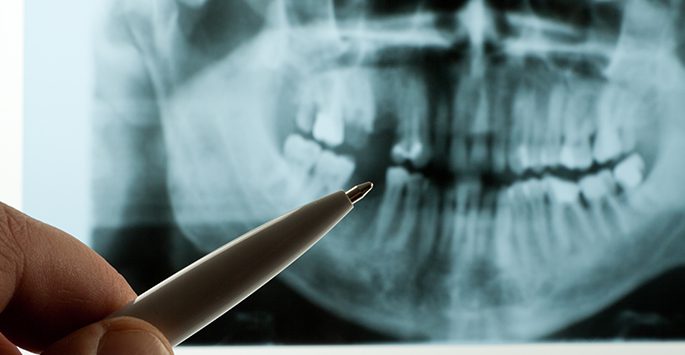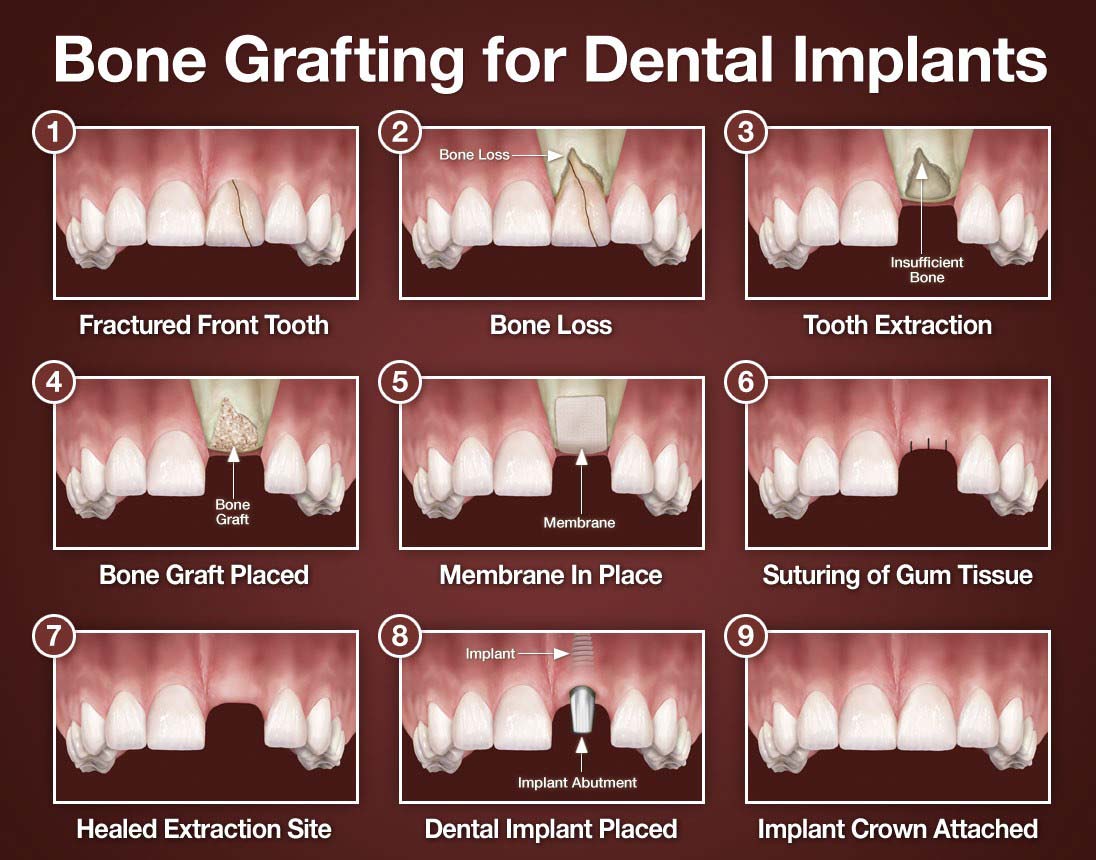 New techniques are continually being developed for preserving, sparing and manipulating bone:
New techniques are continually being developed for preserving, sparing and manipulating bone:
Bone Preservation
Atraumatic Extractions – since the 1960s, when dental implants were developed, dentists have been discovering new ways to extract teeth without traumatizing the bone surrounding the teeth. Most of this carefulness is simply taking more time and being more aware of the technique to remove teeth from the bone.
Immediate Implants – in many cases dentists can place the implant in the socket immediately after the tooth has been extracted. When placed properly the dental implant can preserve the bone where the tooth previously existed.
Socket Preservation Bone Grafting – this is a fairly benign method of attempting to preserve the bone volume in the socket, after extraction. The dentist fills the socket with bank bone, covers it with a non-resorbable Teflon membrane and allows the socket to heal for approximately 25 days at which time the membrane is removed and the socket left to heal for 3-6 months. Studies have shown that this technique can preserve 30% more bone than allowing the socket to heal without intervention.
Bone Sparing
Reverse Turning Drills – this concept tis the most modern and the most quickly evolving. Special drills have been invented to spare bone when drilling to prepare the implant site. Unlike conventional drills that act exactly like carpentry drills by removing bone (think of sawdust created with carpentry drills), these drills turn in reverse (counter-clockwise) and do not cut the bone. Instead, the bone is displaced (pushed) outward and downward without removal. This has created a paradigm shift in implant site preparation.
Bone Manipulation
Ridge Expansion and Ridge Splitting – are techniques used to mechanically expand the bone without drilling it away. Think of hammering a nail into a piece of lumber… no sawdust is created as opposed to drilling into a piece of lumber to create a space for a screw or bolt. These techniques are being replaced with the use of the reverse drilling techniques.

Bone Grafting
Even with all of the above techniques to help preserve bone, many patients who need dental implants have simply lost so much bone that these techniques cannot overcome the bone volume deficiency (degree of bone loss). Therefore, when significant bone loss is present, bone grafting becomes necessary to prepare the site for future dental implants. Occasionally, the dental implant can be placed and the bone graft done at the same time. This saves between 3 and 6 months of healing.
Dentists have the option of using many different forms of bone grafting material:
- Your own bone (autograft, autogenous, autologous)
- Other human’s bone (cadaver, allograft, bank bone)
- Dentin Graft (human tooth component, dentin can be ground up and used as bone graft material)
- Xenograft (bone from other animals, usually pig and cow bone)
Bone graft material is “particulate”, meaning granules. These granules are layered, stacked or packed to build-up the volume of bone at the defect site.
Bone grafts are usually covered at the time of surgery with a collagen membrane or a PTFE (Polytetrafluoroethylene) membrane or trade names like Teflon and Gore-Tex.
The biology of bone grafting is a very dynamic one! Our bone cells, osteoclasts and osteoblasts, convert the bone graft material from its original state to your own bone. After between 3 months and 2 years of healing (depending upon which graft material is used) this new bone is YOURS!
Which type of bone your dentist uses to graft a particular site is dependent upon the technique, the size of the bony defect and the personal preferences of the dentist and patient.
There are a variety of techniques for bone grafting:
Onlay Grafting – involves placing bone “on” surface of the deficiency. Bone particulate is layered to build-up the area of the bony defect. The extent to which the volume can be increased is dependent upon how much the dentist can pull the soft tissue (gums) back over the bone graft. The tissues must be completely closed (known as water-tight closure) and cannot be under tension (stretched). The gum tissue volume and elasticity directly affect the amount of bone that can be grafted, and, hence the subsequent yield of new bone growth.
Sinus Grafting – Bone is placed in the floor of the maxillary sinus(es) (behind cheek bone) to add to the height of the bone in the upper back premolar and molar regions. There are a variety of ways of doing this:
- Through the outer wall of the sinus. This approach is when the patient needs a lot of bone replaced in the area. Patients missing upper back teeth for more than 10 years often need this approach.
- Through the site of the implant. When patients are missing one or two teeth in the upper back regions, a bone graft can be done through the preparation site for the implant. These grafts are usually much smaller.
- With the reverse rotating drills. Because these drills use the irrigation water and bone to push outward, the floor of the sinus can be raised by the action of the drill without additional bone grafting (if the site already has medium bone volume) or bone can be added if the need is greater.
As you can probably imagine, bone grafting is very technique sensitive. That is why so few dentists and dental specialists attempt them. If you’ve been told that you do not have enough bone for dental implants there is hope. By applying one or more of the above techniques, almost every patient can be treated with dental implants.
To learn more about Bone Grafting and how we can help you please fill out the form below.

